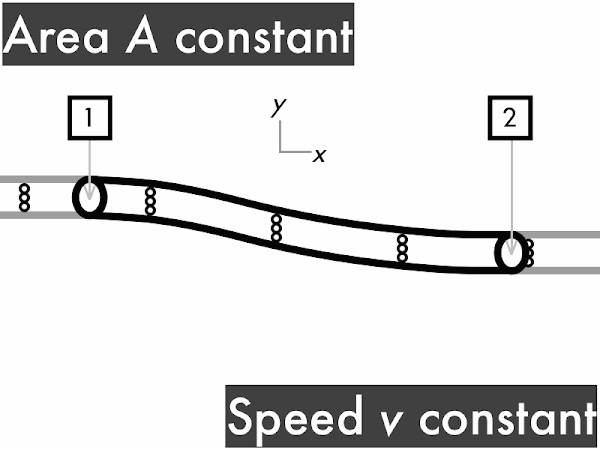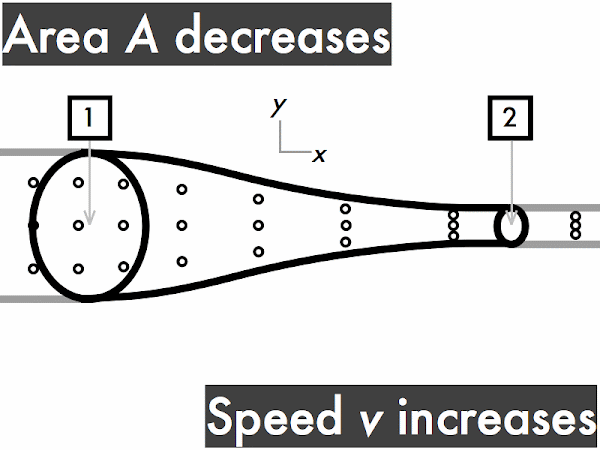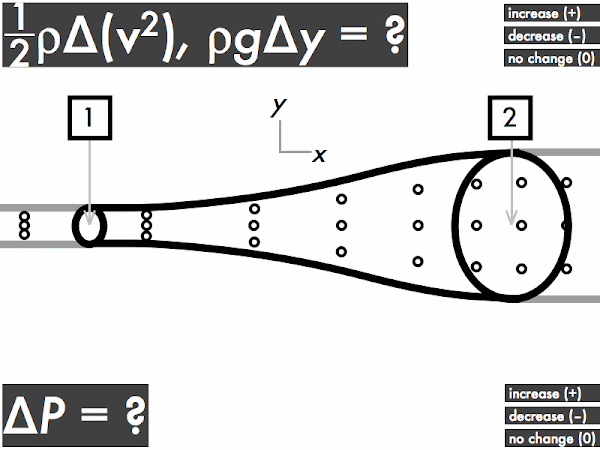Cuesta College, San Luis Obispo, CA
Students have a bi-weekly online reading assignment (hosted by SurveyMonkey.com), where they answer questions based on reading their textbook, material covered in previous lectures, opinion questions, and/or asking (anonymous) questions or making (anonymous) comments. Full credit is given for completing the online reading assignment before next week's lecture, regardless if whether their answers are correct/incorrect. Selected results/questions/comments are addressed by the instructor at the start of the following lecture.
The following questions were asked on reading textbook chapters and previewing a presentation on ideal fluid flow.

Selected/edited responses are given below.
Describe what you understand from the assigned textbook reading or presentation preview. Your description (2-3 sentences) should specifically demonstrate your level of understanding.
"This assigned reading was about dynamic fluids, or ideal fluid flow, as opposed to static fluids which we saw in a previous presentation."
"I can distinguish between viscous and non viscous, turbulent and laminar, and incompressible and compressible."
"Ideal fluids are incompressible, while water is to some extent. Air is not incompressible. water can undergo both, laminar flow and turbulent flow."
"Change in cross-sectional area affects the velocity of the water in a pipe. It's like the same concept of when spraying water and blocking the end to have stronger water flow."
"Area and velocity are inversely related to each other. Bernoulli's equation must remain balanced. Greek letter ρ is the density, and P is the pressure."
"As a pipe's radius changes, that means that the volume flowing at one end must still be equal to the volume coming out, but the speed of that fluid is affected by the change."
"An ideal fluid should undergo laminar flow, where the adjacent particles flow smoothly past each other, instead of undergoing turbulent flow, when particles swirl around in a chaotic manner."
"The fluid volume flow rate does not change even if the area in which the fluid is flowing through changes."
"A fluid speeds up as it moves from a large end to narrow end of a tube."
"I feel I have a loose understanding of volume flow conservation and energy density conservation."
"Even though I really skimmed the content, I feel like you make the information accessible and the new equations easy to use."
Describe what you found confusing from the assigned textbook reading or presentation preview. Your description (2-3 sentences) should specifically identify the concept(s) that you do not understand.
"Why does height differences matter (Δy) for pressure changes?"
"When talking about volume flow rate it's confusing as to why the flow going in is equal to flow going out."
"How is the volume flow rate connected to the continuity equation?"
"Bernoulli's equation."
"I think I am grasping the concepts, but I could definitely use some examples to make sure that I am correctly understanding Bernoulli's equation."
"Bernoulli's equation could be elaborated on more. I think I understand where the energy density transfers take place, but not 100% sure."
"This section seems very clear and straight forward. The GIF animations help a lot with visualizing the liquid and the energy/pressure going through the pipe."
"I feel like I understood most of it all. Maybe if a situation where a tube slightly gets smaller or larger over its length."
"I usually end up reading the chapter after class on monday when this happens between class and the lab."
What is the SI (Système International) unit for volume flow rate?
"m3/s."
"Cubic meters per second."
"Pa?"
"kg/s?"

decreases. [0] remains constant. *************************************** [39] increases. *** [3] (Unsure/lost/guessing/help!) * [1]

decreases. **************** [16] remains constant. ************* [13] increases. ************* [13] (Unsure/lost/guessing/help!) * [1]

decreases. ** [12] remains constant. ************** [14] increases. **************** [16] (Unsure/lost/guessing/help!) * [1]

(Only correct responses shown.)
(1/2)·ρ·∆(v2): decreases [56%]
ρ·g·∆y: no change [70%]
∆P: increases [47%]

(Only correct responses shown.)
(1/2)·ρ·∆(v2): increases [52%]
ρ·g·∆y: no change [63%]
∆P: decreases [47%]

(Only correct responses shown.)
(1/2)·ρ·∆(v2): no change [74%]
ρ·g·∆y: decreases [44%]
∆P: increases [28%]
Ask the instructor an anonymous question, or make a comment. Selected questions/comments may be discussed in class.
"Review on how to use Bernoulli's equation in these applications."
"Examples with Bernoulli's equation?"
"Going over the above examples would be very helpful. They made little sense to me."
"What is an example of an ideal fluid like we would be judging in this case? Is water usually non-viscous and laminar?" (Not always, but in large enough pipes that don't have too many bends, water is approximated very well with laminar flow. Same with air, as long as it flows through ventilation ducts that are reasonably aerodynamic, it will also have laminar flow.)
"Why was Bernoulli's equation named after him?" (He was the first person to recognize that a moving fluid can transfer its gravitational potential energy and translational kinetic energy to and from pressure.)
"How long have you had a mustache?" (Probably longer than you've been alive.)
No comments:
Post a Comment